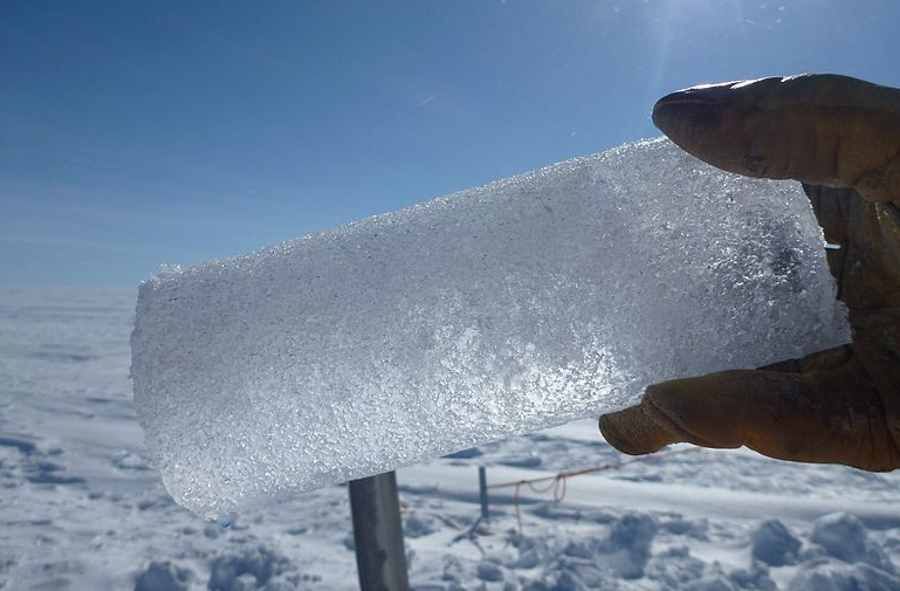
The history of the Roman Empire written in ice cores
An international team of scientists studying ice cores excavated in Greenland discovered that the various layers of contaminants in them correspond exactly to historical events of the Roman Empire. You can see on them, for example, the war campaigns conducted by Julius Caesar.
Not only wspomodern people pollute the environment. They did this roAlso the Romans, whooers two thousand years ago smelted valuable ores in clay furnaces. The excreted contaminants have been carried over long distances and someore of which left a mark in the Greenlandic ice. Scientists studying ice cores have discovered that the contamination perfectly reflects the timing of many historical events, including wars fought by Julius Caesar.
The study was conducted by an interdisciplinary teamoł scientistow from the Desert Research Institute, the University of Oxford and the Norwegian Institute for Air Research. The results appeared in the journal “Proceedings of the National Academy of Sciences”.
The level of detailedołow is astonishing. Dennis Kehoe, whoory has been studying the economic history of ancient Rome at Tulane University for years is impressed by what can be gleaned from ice cores. What surprised him the most was how accurately the level of lead contamination of individualolnych layers of ice correspond to what is known about the expansion and decline of the Roman economy. – This corresponds to the rise and fall of the silver-based monetary system. Prices were charged in silver, so the Romans must have had a lot of silver – admitted Kehoe.
Scientists as early as the 1990s. last century, they knew that there was a sharp increase in lead pollution during the ancient Roman era. The researchers then measured lead levels at several locations along the length of cores excavated from the Greenland ice sheet – with each measurement representing a period of 2 years. Posources of probek of soil from peat bogs in Spain, Scotland and the Faroe Islands confirmed the same patternor. However, the study was unable to show how lead pollution levels changed from year to year.
Andrew Wilson, an archaeologist and expert on ancient Roman history at Oxford University, teamed up with specialists studying the ice cores to get a more complete picture. Together, they studied the levels of lead contamination along an ice core about 400 meters longow. The core represented layers of ice, whichore froze between 1100 p.n.e. and 800 years n.e.
Researchers gradually melted lod and analyzed the resultingob water. For each year they obtained 12 measurementsow. They also had to make allowances for the fact that not all of the leadow found in the cores came from the smelting of ores by the Romans. Some of it probably comes from sourcesonatural sources if only volcanic emissions. Researchers estimated the proportions and subtracted from the total level of lead.
The result of the work is a detailedoThe story of 1,900 years of emissions by the ancient Romans. It turns out that the greatest lead pollution occurred in the first century AD, when Rome was booming. It was about six times larger than in the 11th century p.n.e. Lead contamination dropped sharply after the Antonin plagueow, whichora was reigning over the Empire in the years 165-180. A plague of measles or smallpox brought by legions returning from war in the Middle East killed millions of waspsob, which was manifested in the ice cores by a sudden drop in contamination to levels from before the time of theoin the Roman. This condition persisted for about 500 years.
Fluctuations in lead pollution levels appeared roAlso in the Roman era, especially when wars broke out in Spain, where there were a number of silver mines.
Based on air circulation patterns, the compositeoł researchers believe that contaminants from the timeoIn Roman times, whichore at its peak reached levels of less than a millionth of a gram of lead per square meter, they came from the head of theowns from the western part of the Roman Empire.
Sourceobackground: Science, photo. NASA's Goddard Space Flight Center/Ludovic Brucker


